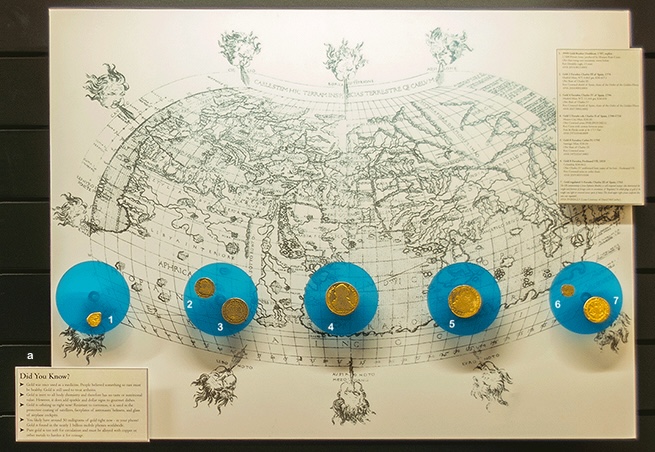
INTRODUCTION
Gold has been coveted since its discovery over 5000 years ago. Egyptian hieroglyphs describe gold as early as 2600 BC. Gold has been valued wherever it has been encountered – for its beauty, versatility and resistance to change (gold does not rust, discolor or tarnish). Valued for its malleability (a single ounce can make a translucent sheet covering 300 square feet!), heat and electrical conductivity, resistance to chemical reactions, and – of course – its splendor, gold has captured the hearts and minds (and wallets) of mankind.
Click on the items in the case image below for an enhanced view
|
AUDIO COMPANION
|
For thousands of years, gold – symbolic of purity, divinity, and royalty – has been the standard of value for currencies world-wide. Spain’s discovery of precious metals in the New World enabled them to produce vast numbers of gold and silver coins, which dominated world trade from the 16th to the early 19th century. Spanish gold 8 escudos, silver 8 reales coins and their fractions became the first global coinage accepted and imitated everywhere in international trade, including the English colonies of North America. The coins came in two basic forms – initially as crudely-made cobs, the legendary “pirate treasure” coins, and later as the much finer milled coinage of the 18th and early 19th centuries. It was these milled coins that became the standard for the earliest American coinage, giving the United States its dollar coin.
